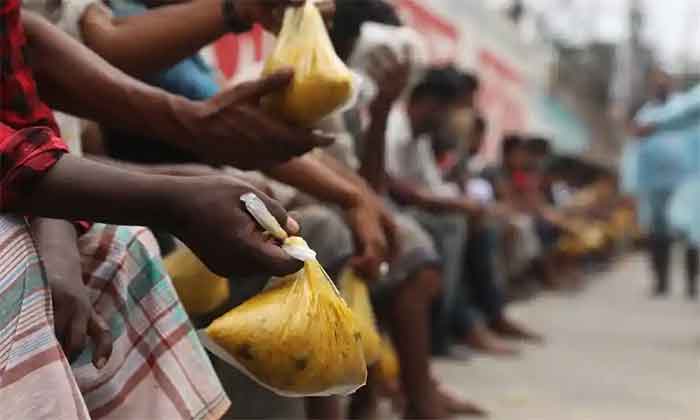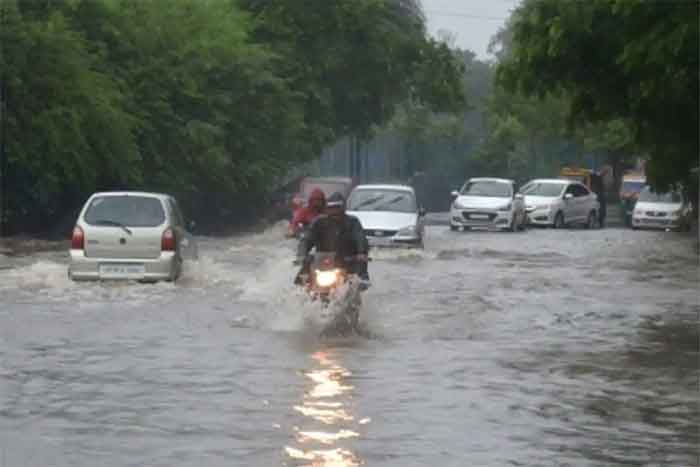
In the 3–4 months before the Covid pandemic set in early 2020, potato prices were ruling high at around Rs.30–35 per kg in the retail markets. India’s potato farmers who had raised their rabi crop in November 2019 had high hopes of making a good income.
But the unexpected lockdown declared on 24 March 2020 resulted in a very sharp fall in the price offered by the traders and potato growers, like all other farmers, were ruined. But there was a dramatic transformation in the potato markets from June 2020 onwards. Once the lockdown was lifted, potato prices for consumers touched Rs.40 a kg in September 2020 coinciding with the kharif harvest.
The potato farmers however were still getting Rs.12–15 per kg only. And yet, they were happy because the dark phase of getting only Rs.2 per kg was over. Much of whatever they lost in the rabi crop they could recover in the kharif crop.
But, to their misfortune, potato prices fell again in December 2020. The low prices of potato continued till May 2021 post-rabi harvest before recovering again from May onwards and then and again there was a sharp fall in September 2021 during the next kharif harvest and even by March 2022 they were getting not more than Rs.6 per kg from the traders as the going rate in the consumer markets was Rs.8 a kg.
This is not an isolated instance. It captures the general trend of sharp fluctuations in the wholesale as well as retail prices (measured by Consumer Price Index-CPI) in general and the prices of almost all farm commodities triggered by the pandemic (See Tables at the end of Part I). The volatility further added to the basic malady of the difference between consumer price of Rs.40 in the cities and the farm-gate price of Rs.10 that the farmers got, which underlined how the market dynamics were working against the farmers even in “normal” times.
Of course, usually several factors are at play behind food inflation and sharp fluctuation in food stuff prices. Food inflation is often part of the general inflation dictated by the macro-economic scenario, both at the national and international levels. The price differentials between the international and domestic markets and the ever-changing prospects for exports and imports influence domestic prices of farm products in a far-reaching manner.
Besides this, the changes in the prices of inputs like fertilisers and diesel used in transportation, the Minimum Support Price (MSP) offered by the government and other interventions by the Centre and State governments in agriculture like expansion of the PDS basket and the level of procurement, or increase in fertiliser subsidy, the price offered by companies, especially e-commerce companies, which have vastly expanded online retail sales of even agricultural products during the pandemic, and the possible impact of futures trading in agricultural commodities in the financial markets—all have their bearing on food prices.
Above all, well-organised mafia of wholesale traders manipulates the agricultural “open market” prices to a large extent through hoarding and select market interventions. Food inflation is a function of all these multiple variables. The Covid pandemic’s impact on food prices was not limited just to the disruption of supply lines only. It impacted on all the above variables in different ways and hence on the final food prices, in an extremely complicated manner.
Further, India has a vast countryside spread across 28 States and 8 Union Territories with numerous agro-climatic zones and it would be futile to look for some uniform impact of the pandemic on agricultural prices. Despite immense regional and local variations, in this write-up we will try to capture some general trends and factors triggered by the pandemic that influenced food inflation.
The immediate impact of the lockdown
As soon as a countrywide total lockdown was declared on 24 March the supply lines for farmers got totally disrupted. Transportation of agricultural produce to markets in far-flung areas became impossible. Nearby local markets were also shut. Trucks and vans or any other vehicles were not allowed to ply. Besides permitting some essential services, the government also allowed hawkers to sell vegetables. To sell their grown farm products, especially perishables and other vegetables, many farmers took on a new avatar as hawkers and started moving to the nearby cities and towns to sell their vegetables in pushcarts and even on cycles.
 Meanwhile, the urban working people like construction labourers, small shopkeepers, artisans, and rickshaw and auto-taxi drivers, etc., also took to selling vegetables as they were deprived of their routine work. Most of them were having a hand-to-mouth existence without much savings and they had to find some means of earning their livelihood. So they too became vegetable hawkers.
Meanwhile, the urban working people like construction labourers, small shopkeepers, artisans, and rickshaw and auto-taxi drivers, etc., also took to selling vegetables as they were deprived of their routine work. Most of them were having a hand-to-mouth existence without much savings and they had to find some means of earning their livelihood. So they too became vegetable hawkers.
Because of this heavy competition, costly vegetables, usually exported, like French beans or capsicum, normally costing Rs.80 to 100 per kg at normal times, were being sold for Rs.20 a kg, thanks to farmers’ rush to sell these crops locally. The heavy competition among the new “hawkers” and the fact that exports ground to a halt also lowered prices. Other vegetables like cauliflowers and broccoli were being sold for Rs.5 and Rs.10 a piece respectively and carrots and radish at Rs.5 a kg., while ladies’ finger and brinjal were available for Rs.10 a kg.
Urban dwellers had never seen such an abundance of vegetable supplies at such throwaway prices in recent history. The pandemic came as a blessing in disguise for them in this respect. But it was agonising for farmers as they had to sell them cheap.
Mr.Vijoo Krishnan, Joint Secretary of All-India Kisan Sabha told Covid Response Watch, “Between March end to April end in 2020, the rubber prices crashed to 24% and as per UPASI figures the rubber growers in Kerala suffered a loss of Rs.610 crore in this period only.” He also added that beside supply chain and transport disruption, the fall in people’s income and purchasing power was also a key reason for the crash in prices of vegetables and some other food commodities. Millions lost jobs and had to cut their food budgets drastically and hence consumption and prices both fell, he added. Citing the example of grape growers in Nashik, Mr.Vijoo said the farmers they could not realise even their harvesting costs.
The sharp fall in prices of food items was however limited mainly to vegetables. This reduction is not captured in the consumer food price index put out by the Ministry of Statistics because it is a composite index in which the sub-group of vegetables has a weight of 6% only, and is influenced more by the sharp increases in the prices of edible oils and pulses even during the lockdown phase.
Table 1: Food Price Inflation Index
| Food Price Inflation (Sub-Groupwise) | Weight in Total Food & Beverage (in Jan 2022) | Jan 2020 | Jan 2021 | Jan 2022* |
| Cereals and Cereal Products | 9.67 | 144.3 | 144.5 | 149.4 |
| Meat and Fish | 3.61 | 167.3 | 188.4 | 198.7 |
| Eggs | 0.43 | 154.8 | 174.9 | 178.8 |
| Milk & Milk Products | 6.61 | 150.1 | 154.2 | 160.5 |
| Oils & Fats | 3.56 | 129.9 | 155.6 | 184.7 |
| Fruits | 2.89 | 143.2 | 150.3 | 153.7 |
| Vegetables | 6.04 | 197.2 | 165.8 | 174.4 |
| Pulses and Products | 2.38 | 140.4 | 159.1 | 163.9 |
| Sugar & Confectionaries | 1.36 | 114.1 | 113.8 | 119.9 |
| Spices | 2.50 | 150.9 | 164.4 | 172.1 |
| Non-Alcoholic Beverages | 1.26 | 136.1 | 154.0 | 164.2 |
| Prepared Meals, Snacks & Sweets etc. | 5.55 | 158.6 | 166.7 | 177.3 |
| Food & Beverages Total (Excluding Non-Alcoholic Beverages and Prepared Means, Snacks & Sweets etc. among the above 12 sub-groups) | 45.86 (in General Consumer Price Index) | 153.4 | 157.6 | 166.4 |
| Consumer Price Index (General) | 100 | 150.2 | 166.1 | 165.7 |
* Figures for Jan 2022 are provisional.
Source: Press Information Bureau Press Release ID: 1798312
But the phase of fall in price of vegetables did not last long after the lockdown was lifted and the process of unlocking started. Starting from July 2020, there was a steep increase in prices due to various factors which continued till November 2020 and then prices started falling again in December and in January 2021 the monthly increase in retail inflation was the among the least during the entire pandemic period at 1.96%. After a steady rise in February to March, the food inflation as a whole fell in April 2021 due to re-imposition of the lockdown during the Covid-19 second wave and the lockdown continued till June 2021 end. After some recovery from July, the food prices fell again when lockdown was re-imposed in September.
Lockdown disruptions apart, the fundamental reason for fall in prices is the massive loss of employment among the working population and hence loss of incomes. The demand for food stuff also dipped to a bare minimum, just to support bare survival. There were deep cuts in the household food budgets even as prices shot up due to other factors. Aggregate demand fell due to the fall in purchasing power. But in an apparent paradox, prices increased due to cost-push inflation and perhaps also due to exports at higher prices. In some food items, prices ruled high. Chicken and mutton became objects of luxury even for the middle classes. Chicken, selling at Rs.90 a kg in December 2019, now costs Rs.190 in March 2022. Mutton price also almost doubled from around Rs.400 a kg in 2019 to Rs.750 a kg now. The average consumer who used to purchase ½ kg of vegetables per day started buying only 250 grams.
This had its effect on the normal supply-demand dynamic and farm products prices fell first in January 2021 even without a lockdown and again in April 2021 and September 2021 due to re-imposed lockdowns before rising again on both occasions. As indicated, besides lockdown disruptions, a few other factors influenced by the pandemic were also at work at various levels.
If we divide the agricultural commodities into four broad categories broadly like food grains, dals & oil, horticultural commodities and allied sector products like milk, meat, poultry products and fish, their prices moved differently under varied impact of the pandemic.
Among different categories, the prices of edible oils and dals, and the cost of mutton, chicken and eggs, witnessed the steepest hike. Edible oils witnessed the maximum increase of nearly 50 index points in their price index while cereals and cereal products witnessed less than 5% increase. Meat and fish witnessed a hike of 35% in their index numbers while pulses showed an increase by 25 points.
Vegetables is the only sub-category that witnessed a fall in prices to the tune of 30 index points by 2021 January on a year-on-year basis before increasing by ten points by January 2022. Such a diverse movement in the prices of different sets of food commodities cannot be explained only by one of two factors like disruption of supply chains and erosion in purchasing power.
Covid or no Covid, costlier or cheaper, people have to eat to survive. However, besides purchasing power, variations in other factors also influenced the level of consumption and demand. In the next part, we shall take a look at some other factors which were at play.
B. Sivaraman is a researcher based in Allahabad, Uttar Pradesh














































